References
That first all important meeting with your patient!
From Volume 44, Issue 8, September 2017 | Pages 742-752
Article

Diagnosis and treatment planning in dentistry is a partnership starting with the patient leading the oral history. By the end of the consultation, an autonomous patient makes his/her own choice based on the clinician examination and consultation, given risk, benefits, outcomes and consequences. A dental clinician with a clear understanding of the motivations and expectations of the patient will maintain a robust dentist/patient relationship in the future treatment. This may be regardless of the technical success of the treatment. This understanding will commence in the first few appointments and will continue throughout the treatment. However, in general practice, while we focus on the dental centric problems, we may miss the bigger picture. This article is an attempt to put some thoughts around the first discussions with the patient, as it is well known that first impressions count. As a general article, it is not the aim to discuss systems that dentists work within but to provide some examples of how to balance patient and dentist expectations. In view of the different approaches to treatment planning, the aim of this article is to provide indicators on how to manage the patients' expectations alongside the dental competencies related to the management of partially dentate patients. Although the article has a bias to prosthodontic treatment, the take home messages will be the same for any patient/dentist consultation.
Background
The Adult Dental Health Survey 2009 reported an increase in the proportion of adults who had retained their teeth from 74% in 1978 to 86% in 2009.1 The increase has occurred mainly in the older age groups and has resulted in an increased demand to restore partially dentate mouths in general dental practice. Such patients may have undergone extensive restorative treatment previously and their ongoing care may prove to be a challenge in the primary care setting. Extensive restorative work brings about its own problems, including difficulty in keeping the teeth and maintaining restorations free of plaque. Therefore, treatment planning may well be influenced by the presence of periodontal disease which has to be factored into the management plan. The caries incidence and occurrence will vary and the causes of the increased decay in a patient's mouth will require diagnosing. It may be difficult to visualize any caries beneath extensive restorations and, when eventually discovered, may well be extensive. Therefore, both fixed and removable prosthetic treatment planning will require rigorous and systematic care, which includes preventive approaches both at the start and throughout the restorative treatment.
Whilst it is established that there will be an upsurge in complex care on an increasingly older age group, the question of who will provide such treatment is itself complex. Dental education is a lifelong learning exercise. This involves dental clinicians attaining competencies initially through a range of procedures and then eventually becoming proficient, with continued learning and practice. The Department of Health is seeking to introduce contract reform in NHS dentistry, and one aspect being discussed is the involvement of a tier system for dentists based on their competencies.2 Dentists will be categorized into three tiers:
This tier structure is expected to reduce inappropriate referrals and to streamline appropriate patient management based on complexity.3 Therefore, dentists will have training and assessment to pick up the appropriate competencies for each tier level and be ready to accept suitable patients for their competency level.
There is a limited evidence base to the success of treatment against complexity.4The Index of Restorative Treatment Need (IOTN), published by the Royal College of Surgeons of England (Table 1), provides the guidelines on complexity of cases.5,6 However, this indexing is dental-oriented and the patient-related outcomes are not adequately factored into the complexity. For instance, a tissue-borne prosthesis, which is coded as simple in the index, can be complex depending on a range of factors, such as caries and periodontal status of the abutment teeth, amount of tissue loss, difficult jaw relations; and the psychological factors such as unrealistic patient expectations. It is widely known that one of the strongest predictors of success with fixed and removable prostheses is the dentist/patient relationship.7,8 Such evidence-based approaches are needed, but there can be difficulties, since clinical research in this area is limited.
|
Complexity 1
|
Patient-related outcomes
The internet provides patients with the ability to research these treatment options and discuss with friends and family prior to and during their care. Therefore, the dental practitioner should be ready to accept this, and to provide a sensible treatment plan supported by an evidence-based approach.
For example, the following case study 1 (Figures 1 and 2) provides an example of unrealistic expectations. A 56-year-old male patient presented with problems wearing dentures. He was partially dentate for many years, with anterior and posterior missing spaces. He had attended three dentists previously and presented with three sets of dentures. He gave a history of having an anterior bridge for many years. He also said that, in the past, he had difficulty wearing dentures, which were replacing posterior teeth, due to gagging, and declined them. On presentation, he had developed a pseudo Class III jaw relation position and claimed that he chewed his food only with anterior teeth and requested a fixed replacement in an edge to edge incisal relation as he believed only this arrangement could solve his problem. The patient had both caries and periodontal problems but all he wanted was to have a denture or implant in the front of his mouth.

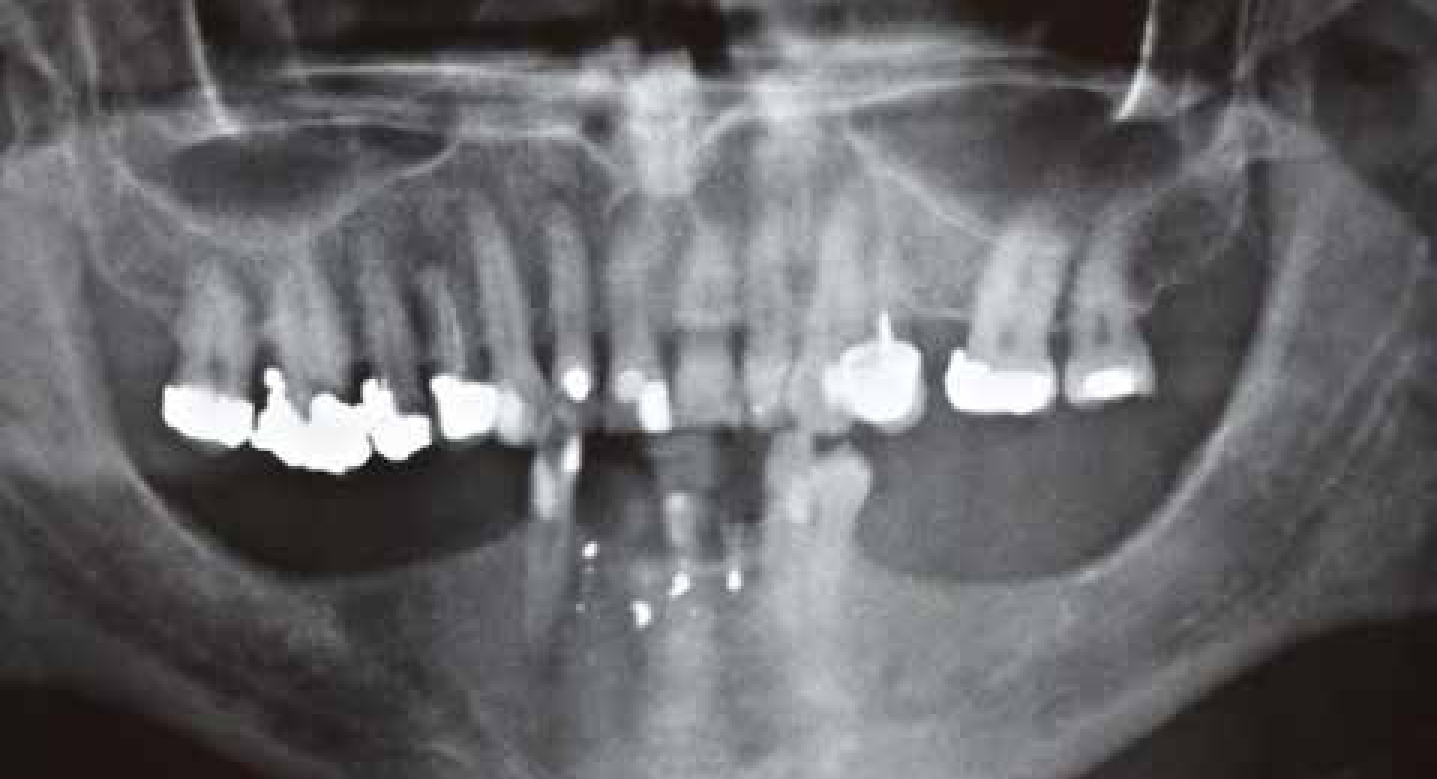
Therefore, there was a conflict between the patient expectations and the dentist's view to providing a stable long-term solution. In situations like this, the clinician should not override the clinical presentation and just treat the specific patient's desires, as this could result in long-term failure. The patient's expectations may alter, after the clinician has shared with the patient why he/she initially feels what appears to be the best option is actually not such a feasible idea. The consultation with the dentist will often provide the patient with a better understanding of the risks involved in such a treatment approach.
The evidence base for the success of fixed and removable prosthodontic treatment is not well developed. There are reports to show that patient satisfaction does not relate to the quality of dentures.9 According to Berg, around 20% of denture wearers are not generally satisfied, regardless of the quality of dentures.10 The measure of the quality of dentures from a dentist's assessment may be different from the patient's viewpoint.11 It is generally believed that patients with implant-supported overdentures are more satisfied than those with conventional complete dentures.12 However, Emami et al, in their meta-analysis in 2009, found that the magnitude of perceived general health does not correlate with the technical success of treatment, even with implant-supported overdentures.13 This supports the argument that making technically correct prostheses alone, without considering the patient psychology, does not guarantee clinical success. This indicates that the patient satisfaction factor will be a dominating factor over the technical expertise of the dentist. Either these patients may require further treatment or their expectations cannot be matched.
The first meeting
In a busy general dental practice set-up, it may not be easy to identify potential problems with patient expectations. At the initial appointment, a careful assessment is required to understand the patients' concern of well-being and to find what is motivating them. Often this will require an element of reflection by both the patient and dentist once information has been shared at the initial consultation. This takes time and the dentist should be alert to non-dental confounders, an example being the patient described in Figures 1 and 2. When patients attend for replacement of missing teeth, the history, especially their social background and lifestyle, will have an important bearing on their care from simple to a complex management. There may be outside pressures which are impacting on the quality of life of the patient.
Understanding lifestyle choices
An informed social history will help us understand lifestyle choices. This may include how easy it is for patients to access the dental surgery and the timing of appointments to suit their diary. Examples of patients' lifestyle choices are as listed in Table 2.
|
|
Lifestyle choices, such as smoking, can both directly and indirectly affect the health of oral and periodontal tissues. However, the literature is lacking in linking the association between these to patient expectation or satisfaction. Factors, such as patient's occupation, and marital status, may reflect in the acceptance or demand of particular treatment. The current remuneration system in NHS allows the patients to have banded treatment, where they pay for the band. This is regardless of whether they accept for all the treatments which are included in that band. This is different from a private funding system, where patients accept only for what they want; and pay specifically for that treatment. Therefore, the patient demand and expectations in the private sector may be more. However, this is only the authors' opinion and may be different from others.
There may be situations where occupation affects the treatment planning, regardless of the payment system. Table 3 describes one such situation which provides a case history where a patient's unrealistic requirements may complicate the treatment planning. Similarly, there are patients who live alone, or patients who live in care homes with difficult access to the surgery, or find difficulty making multiple appointments. Dependency does not make them victims of inadequate treatment planning. Their choices should also be considered.
| Mrs SB attends the surgery with a fracture line in her denture. She is stressed about the fact that the denture might break. On examination, she presents with a partially dentate upper arch with a Kennedy Class I arch. Upper anterior teeth are present, but with advanced periodontitis (BPE Code 4). |
Every medical and social history questionnaire in practice has questions about number of cigarettes or packs per day and number of units of alcohol consumed in a week. However, in general practice, responses to these questions may not be correctly factored into the restorative treatment planning. There is definite evidence that alcohol and smoking have an effect on tissue health and patient well-being.14,15 On the other hand, these will provide other clues to patient motivation. For example, after a discussion on the effects of smoking with respect to dental implant treatment, a patient's attitude towards reducing or stopping smoking will give a clue about how serious he/she is towards restorative treatment. The newly recommended limit of alcohol usage is around 14 units a week.16 However, a patient's pattern of drinking may vary.
The timing of alcohol consumption is an important factor to affect the dental attendance, and a patient's motivation. People who drink above the recommended limit usually make it in the evenings and may also be likely to consume snack food, which may be carbohydrate-based.17 This can increase their caries risk which will impact on their prosthetic treatment. Patients may not notice such problems and, when they are diagnosed, may be alarmed that they have not been notified that such an occurrence has taken place.
Information about the social lifestyle of the patient, ie whether they live alone or are active socially, may indicate how important the period of edentulousness or the flexibility in the time framework for denture construction will affect their lifestyle.
Therefore, the social history gives clues about the motivation of the patient towards dental treatment and maintenance of dentures. This communication and discussion has to take place before embarking on treatment. This may be difficult in a short initial consultation and the clinician may wish to spread the consultation process over a couple of visits. The initial diagnostic procedures, such as study models and clinical photographs, can provide a better understanding of the situation; and help in consulting or peer review with other colleagues to see how to approach the situation. Data collection tools, such as a diet sheet, can give an insight into a patient's lifestyle. Once the problem areas are identified, these should be clearly explained to patients to obtain an informed consent, which is placed in the clinical record and should be updated with any changes in the future.
Diagnosis is an essential step as it brings together the patient's complaints and therefore leads on the approaches that we can undertake with the patient. Diagnosis and treatment planning with some case histories can be difficult. In that first important meeting, patients may unintentionally give away some clues, if picked up by dentists, which may prompt the dentist to be more aware of potential problems. For example, patients who have seen several dentists over the last few years, or who have unrealistic time expectations, will need to be managed carefully. This management may take the following format. It may be ideal to undertake simple preventive treatment or possibly decline treatment because they are not able to understand the nature of the work that is involved.
There is also the payment system for the practitioners in the national health services, which can influence the treatment plan in England and Wales.18 However, it is beyond the scope of this article to discuss the remuneration system. However, current available payment systems, whether government finance or private finance, will have a direct impact on what can or cannot be achieved. This has to be brought realistically into the treatment plan discussion.
Tooth loss is inevitable, even with the significant advances in dentistry, with the main reasons being caries, periodontal disease or trauma. The resulting edentulous space and its replacement may be complicated by the local hard and soft tissue anatomy and systemic condition of the patient. Severe complexity may require specialist referral and intervention. Some examples of this are shown in Table 4.
|
|
To treat or not to treat?
There are few edentulous situations that may either not require restoration or cannot be restored, so such patients may need to accept the existing situation. One such concept is the shortened dental arch, originally described by Käyser in 1981.19,20 Leaving posterior edentulous spaces unrestored when the anterior teeth are intact has been reported to be adequate for function. This facilitates better oral hygiene and adaptation when compared to a situation when dentures have been provided. The additional advantage can be the reduced cost of treatment. This concept has been a recognized part of the standard treatment planning in the UK.21 Adopting the shortened dental arch concept (Figures 3, 4 and 5) in modern contemporary clinical practice may be an ideal alternative in situations where posterior teeth replacements may not be feasible.
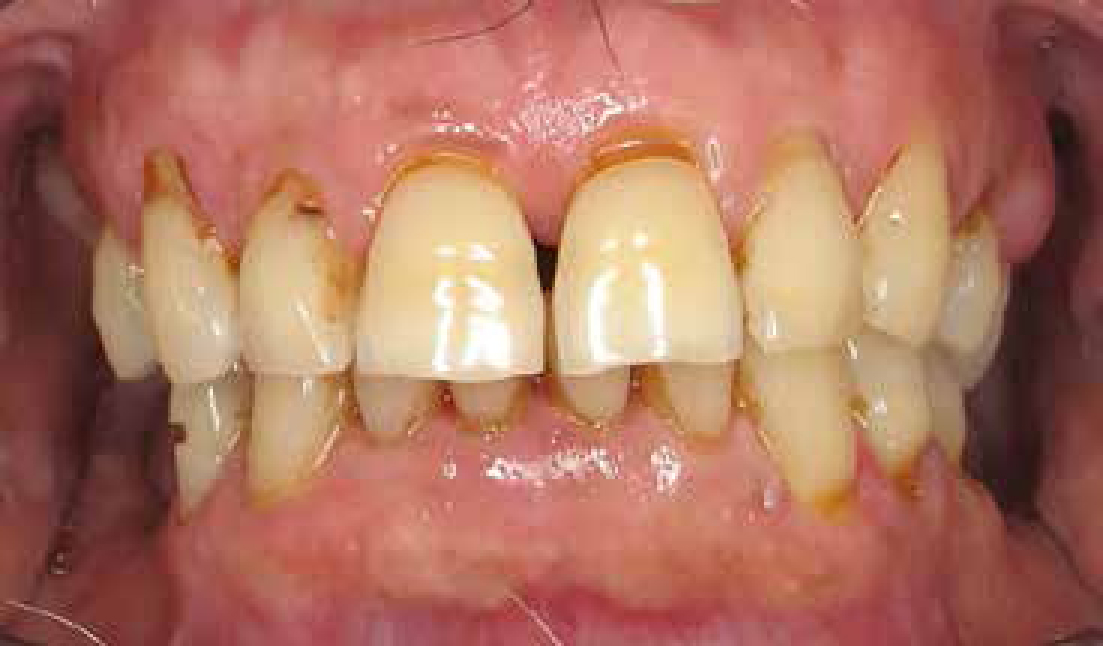
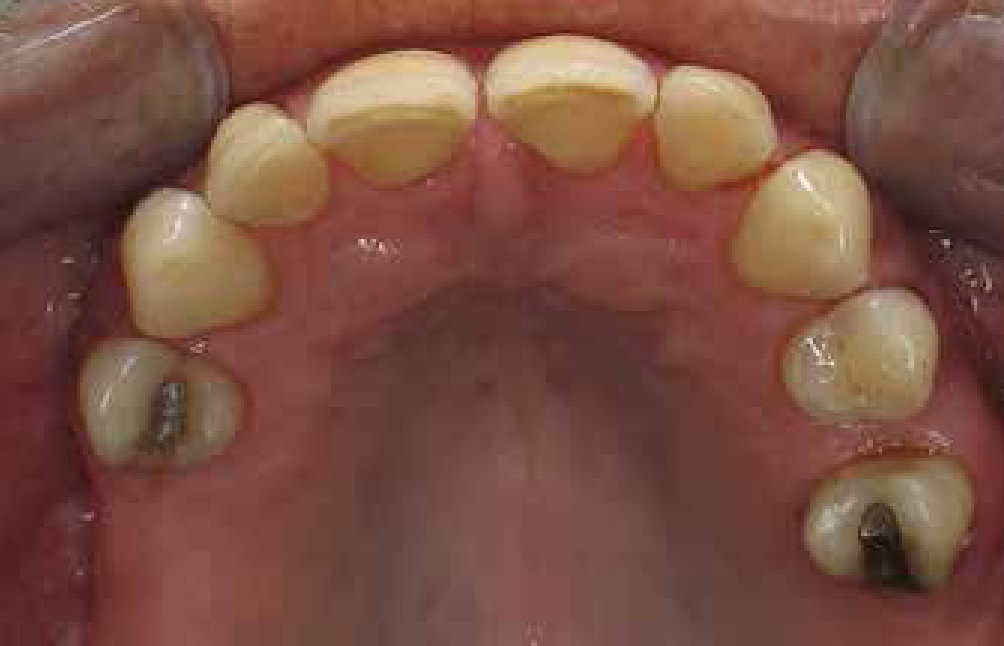

Drifting and over-eruption of teeth provide limited avenues for treatment. Over many years, the patient may have ignored the shifting nature of teeth as it does not cause any discomfort or pain. At a later stage of presentation, the restricted edentulous spaces will present the clinician with a challenging, if not impossible, situation. For example, an 87-year-old female patient who had never worn dentures attended the practice requesting replacements. Clinically, over-eruption of the remaining lower anterior teeth prevented replacement of the upper teeth. Extraction of the remaining teeth and making complete dentures was a technically sound option. There is the complication of the patient's ability to take such a major change in her dental condition. Consequently, any decision should be based on a risks–benefits analysis based on the factors listed in Table 5. These include the patient factors, dentist factors, along with available facilities and evidences.
|
|
Summary
Treatment choices in dentistry are specific to patients, depending on their individual situations. The practitioner must be prepared to identify the available treatment options and their outcomes for the particular situation, supported by the best evidence and also take into consideration the patient's wishes. This should be communicated to the patient and care taken to make sure that it is understood by encouraging reflection; what is and what is not possible should be agreed with the patient and a suitable decision reached for his/her treatment.
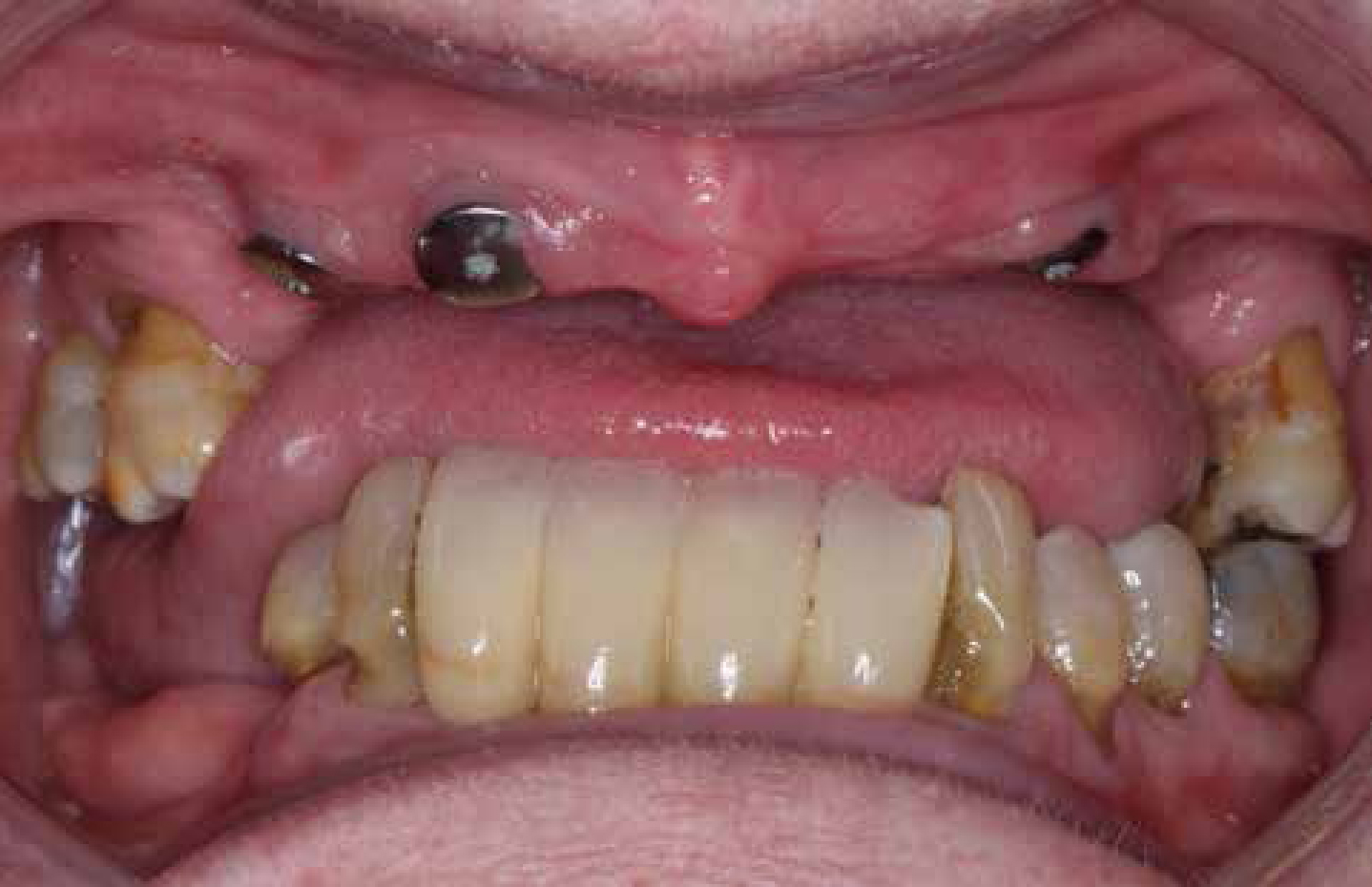

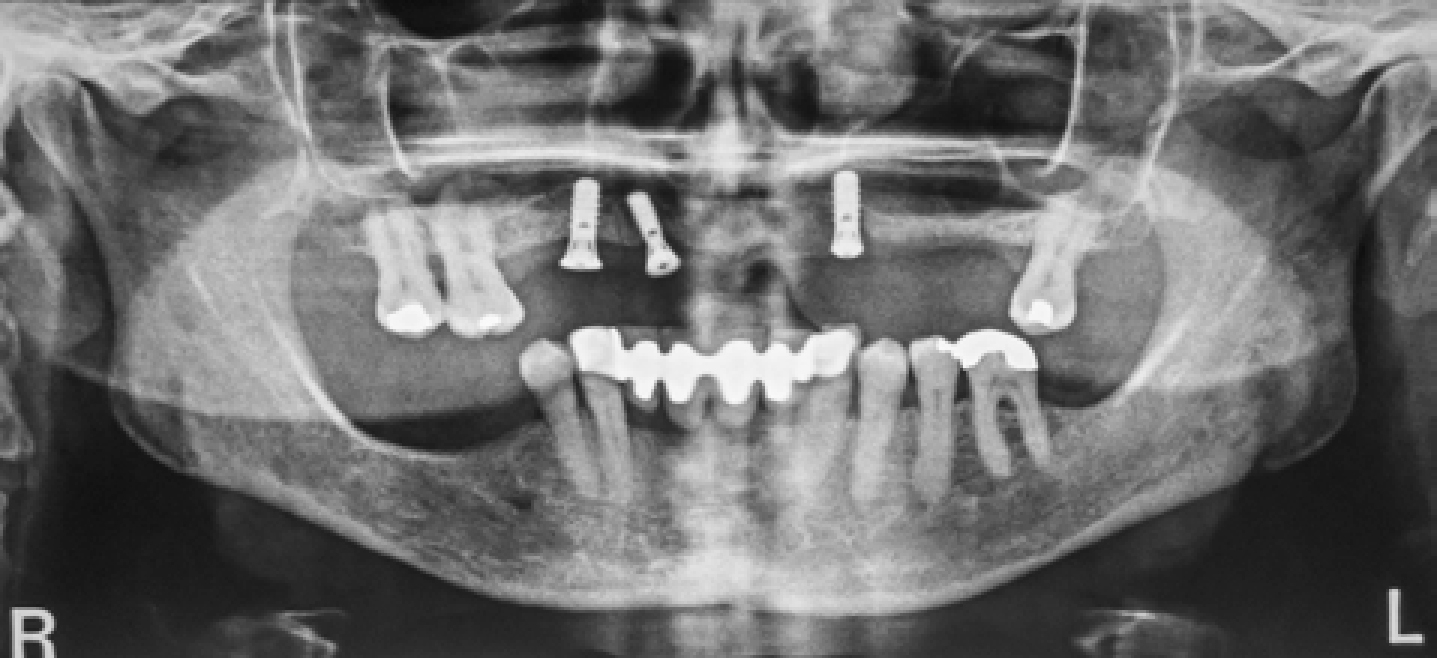
A successful practitioner will keep the plan simple, include patients' wishes in the plan and be ready to seek others opinions when in doubt. He/she will also understand that reflection and discussion can make individuals reconsider their initial treatment decisions, and all concerned should be prepared to deal with a continuing treatment plan that may require modification.

